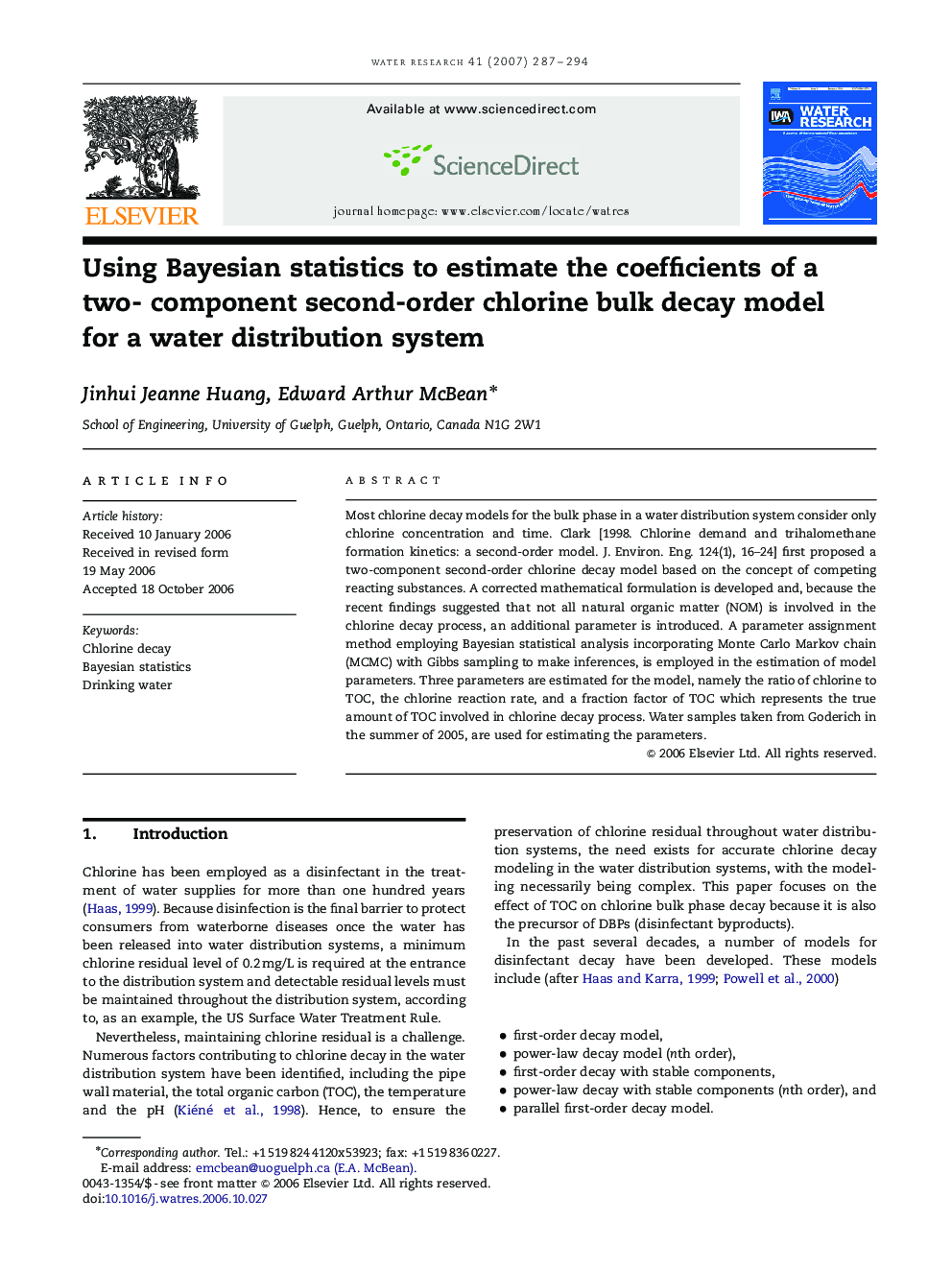| Article ID | Journal | Published Year | Pages | File Type |
|---|---|---|---|---|
| 4486856 | Water Research | 2007 | 8 Pages |
Most chlorine decay models for the bulk phase in a water distribution system consider only chlorine concentration and time. Clark [1998. Chlorine demand and trihalomethane formation kinetics: a second-order model. J. Environ. Eng. 124(1), 16–24] first proposed a two-component second-order chlorine decay model based on the concept of competing reacting substances. A corrected mathematical formulation is developed and, because the recent findings suggested that not all natural organic matter (NOM) is involved in the chlorine decay process, an additional parameter is introduced. A parameter assignment method employing Bayesian statistical analysis incorporating Monte Carlo Markov chain (MCMC) with Gibbs sampling to make inferences, is employed in the estimation of model parameters. Three parameters are estimated for the model, namely the ratio of chlorine to TOC, the chlorine reaction rate, and a fraction factor of TOC which represents the true amount of TOC involved in chlorine decay process. Water samples taken from Goderich in the summer of 2005, are used for estimating the parameters.
